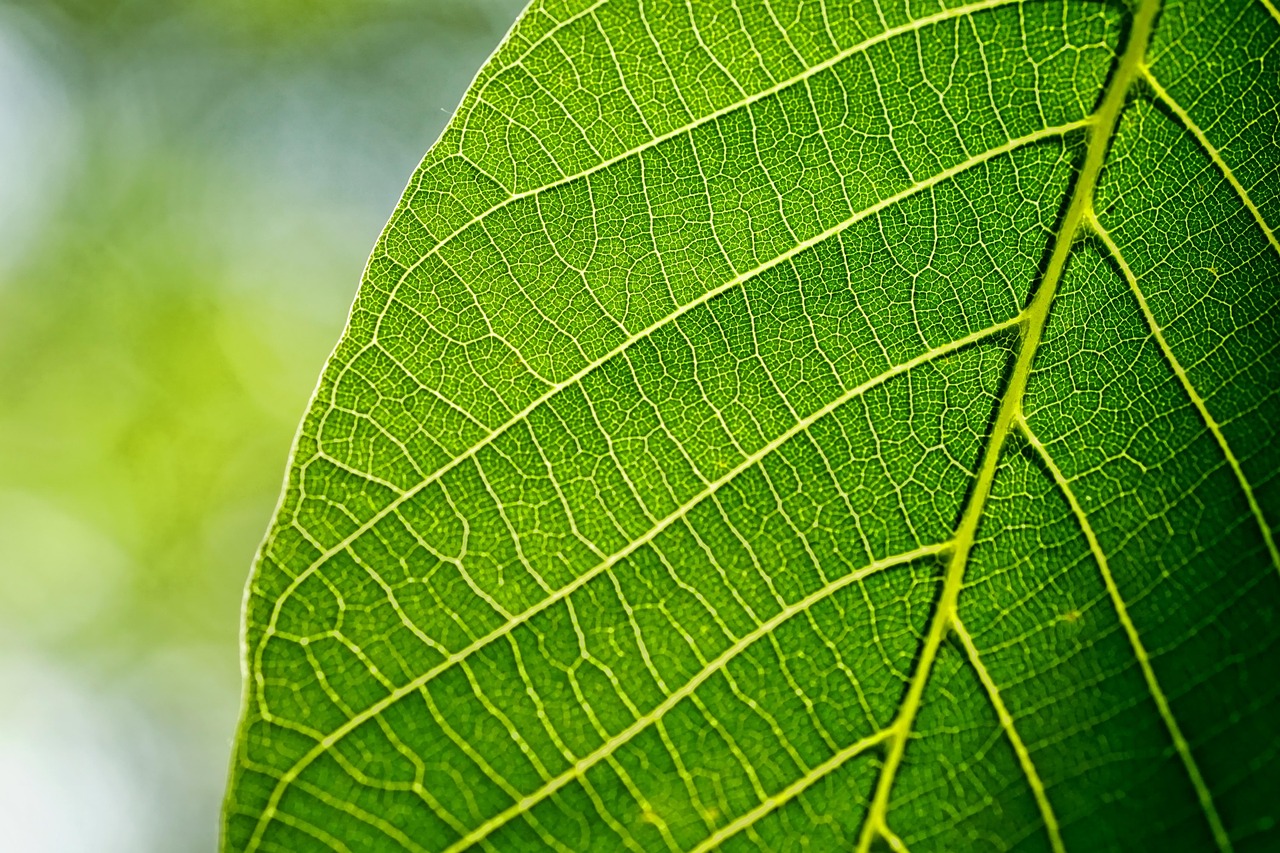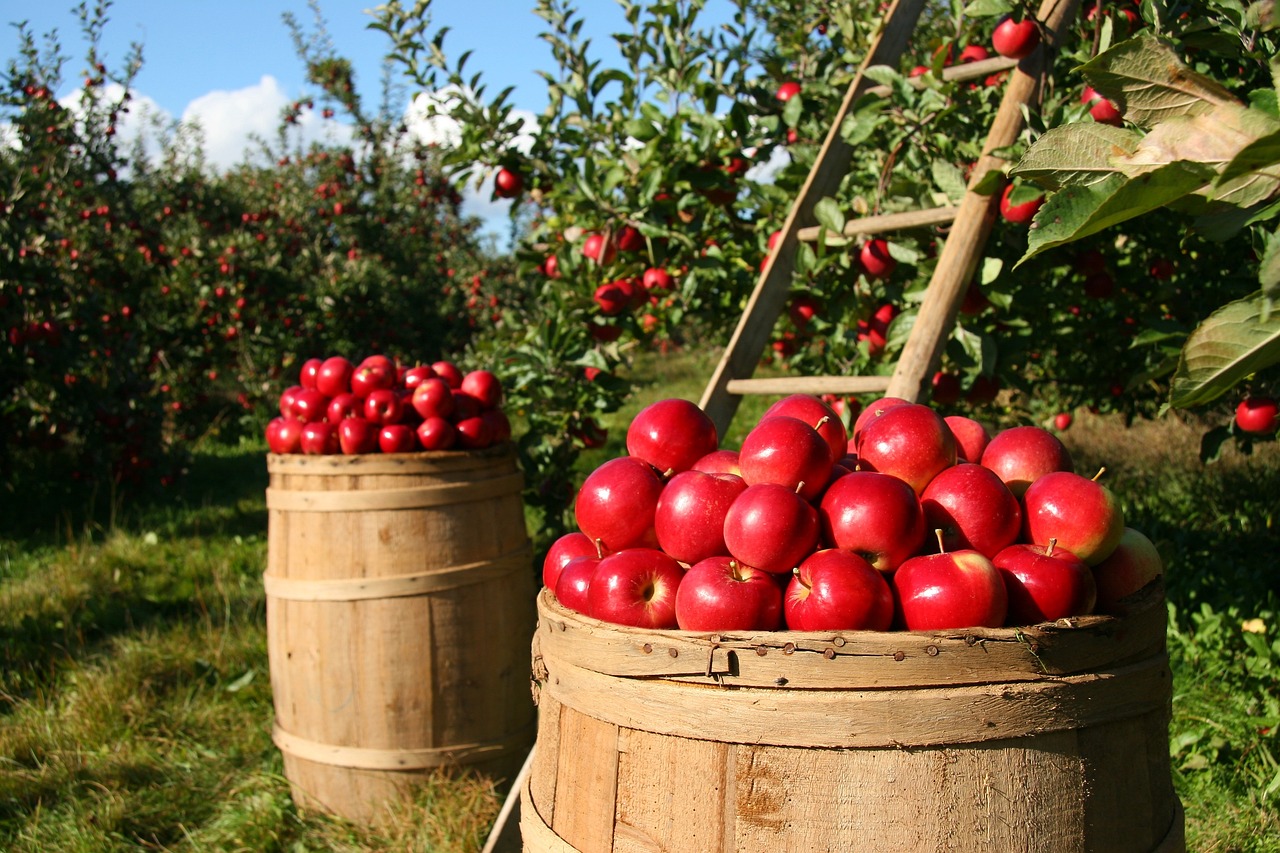Walnut orchard pruning is essential for maximizing nut production and quality. Proper techniques enhance light penetration, improve airflow, and maintain tree health, leading to marketable nuts that meet consumer demands.
Walnut trees are highly valued for their nuts, which are rich in healthy fats and nutrients. Pruning plays a crucial role in ensuring that these trees produce high-quality nuts. Through careful and strategic pruning, orchard owners can significantly enhance the yield and overall health of their walnut trees.

In addition to promoting better nut production, pruning helps in managing tree size and shape. This management allows for easier harvesting and maintenance. Understanding the best practices for pruning walnut orchards is vital for anyone looking to enter this lucrative market.
Understanding Walnut Pruning
Pruning is the practice of selectively removing branches from a tree. This can be done for various reasons, including improving tree health, shaping the tree, or enhancing fruit production. For walnut orchards, the primary goal of pruning is to maximize nut quality and quantity.
The timing of pruning is critical. Generally, walnut trees are pruned during the dormant season, typically from late winter to early spring. Pruning during this time minimizes stress on the trees and reduces the risk of disease. However, some light pruning may also be done in the summer to remove unwanted growth.

Benefits of Pruning Walnut Orchards
There are several benefits associated with pruning walnut orchards. These include:
- Improved Airflow: Pruning opens up the canopy, allowing for better air circulation, which reduces the risk of fungal diseases.
- Enhanced Light Penetration: Removing excess branches ensures that sunlight reaches all parts of the tree, promoting even growth and nut development.
- Higher Nut Quality: Well-pruned trees produce larger, healthier nuts that are more appealing to consumers.
- Better Accessibility: Maintaining a manageable tree height makes harvesting easier and safer.
Key Pruning Techniques
Several pruning techniques can be employed in walnut orchards. Each technique serves a specific purpose and can be tailored to meet the needs of individual orchards. Here are some key methods:
- Crown Thinning: This involves removing selected branches throughout the tree crown to improve light penetration and air circulation.
- Crown Reduction: This technique reduces the overall height or width of the tree by cutting back leading branches.
- Heading Back: This method shortens long branches to encourage bushier growth and more lateral shoots.
- Selective Removal: Unproductive or poorly placed branches are removed to enhance structure and productivity.
Pruning Schedule
A well-planned pruning schedule is essential for successful walnut production. The following table outlines a general pruning schedule for walnut orchards:

| Time of Year | Pruning Activities |
|---|---|
| Late Winter – Early Spring | Major pruning activities; remove dead or diseased branches, shape the tree. |
| Summer | Light pruning to control growth; remove water sprouts and suckers. |
| Fall | No major pruning; focus on monitoring tree health and nut development. |
Proper timing and techniques not only improve the health of the trees but also ensure better yields in terms of quantity and quality of nuts harvested. As walnut orchards mature, regular assessments should be made to adapt pruning strategies based on growth patterns and production goals.
Pest and Disease Management
Pruning also plays a role in pest and disease management in walnut orchards. By maintaining good airflow and light penetration, trees are less susceptible to diseases such as walnut blight or powdery mildew. Regular inspections should be performed to identify any signs of pests or diseases early on.
In summary, effective pruning techniques are essential for maximizing nut production in walnut orchards. By understanding the benefits, techniques, and schedules associated with pruning, orchard managers can optimize their trees for better marketable nuts.

Advanced Pruning Techniques for Walnut Orchards
As walnut trees mature, advanced pruning techniques can be employed to further enhance nut production and tree health. These techniques focus on fine-tuning the structure of the tree and addressing specific growth challenges that may arise over time. Understanding these advanced methods is crucial for orchard managers aiming for optimal yields.
Espalier and Candelabra Techniques
Two innovative pruning styles that have gained popularity in recent years are the espalier and candelabra techniques. Each offers distinct advantages for walnut production:
- Espalier: This technique involves training the tree to grow flat against a support structure. It allows for maximum sunlight exposure and makes harvesting easier. Espaliered trees can also serve as attractive features in an orchard.
- Candelabra: This method encourages the growth of multiple vertical branches that resemble a candelabra. It promotes a wide tree canopy, enhancing light penetration and air circulation while maximizing nut production.
Pruning for Tree Shape and Size
Maintaining the ideal shape and size of walnut trees is essential for maximizing nut yield. Here are specific strategies to achieve this:
- Central Leader Pruning: This technique focuses on establishing a dominant central leader branch while removing competing branches. This encourages a strong, upright growth habit.
- Open Center Pruning: This method removes the central leader entirely, allowing for multiple primary branches to develop. It creates an open canopy that improves light penetration and air flow.
- Thinning: Regular thinning of excess branches helps prevent overcrowding, which can lead to reduced nut quality and increased risk of disease.
Seasonal Considerations in Pruning
The timing of pruning activities is critical to ensuring healthy walnut trees. Seasonal considerations can significantly impact the effectiveness of pruning efforts:
Winter Pruning
Winter is the ideal time for major pruning activities. During this dormant season, trees are less susceptible to stress and disease. Key tasks during winter pruning include:
- Removing dead or diseased wood.
- Shaping the tree by cutting back excessive growth.
- Identifying and eliminating weak or poorly positioned branches.
Summer Pruning
Summer pruning serves a different purpose compared to winter pruning. It is typically lighter and focuses on managing tree growth. Activities during this season may include:
- Trimming water sprouts, which are vigorous shoots that can crowd the tree.
- Removing any unwanted lateral branches that may hinder nut development.
- Enhancing sunlight exposure to developing nuts by selectively pruning foliage.
Tools and Equipment for Pruning
Having the right tools is essential for effective walnut orchard pruning. Using appropriate equipment not only makes the job easier but also ensures clean cuts that promote tree health. Here are some commonly used tools:
| Tool | Description | Use Case |
|---|---|---|
| Pruning Shears | A small, handheld tool for cutting small branches. | Ideal for light pruning and shaping. |
| Loppers | A larger tool with long handles for cutting thicker branches. | Used for medium-sized branches that cannot be cut with shears. |
| Saws | Hand saws or pole saws designed for larger cuts. | Necessary for removing larger limbs or branches. |
| Hedge Trimmers | A powered tool for efficiently trimming foliage. | Useful for maintaining tree shape and size quickly. |
Regular maintenance of these tools is essential to ensure they remain effective. Sharpening blades and cleaning tools after use can prevent the spread of diseases between trees.
Safety Practices in Pruning
Pruning can involve physical risks, especially when working with tall trees or using sharp tools. Following safety practices is crucial to prevent injuries:
- Wear Protective Gear: Always wear gloves, safety goggles, and sturdy shoes while pruning.
- Use Proper Ladders: If working at heights, ensure ladders are stable and used correctly.
- Be Aware of Surroundings: Watch out for power lines, other workers, and obstacles while pruning.
By employing advanced pruning techniques, understanding seasonal considerations, using proper tools, and following safety practices, walnut orchard managers can significantly enhance their harvest potential and ensure sustainable production practices.
Post-Pruning Care for Walnut Orchards
After pruning walnut trees, it is essential to provide appropriate care to promote healing and enhance overall tree health. The post-pruning period is critical for ensuring that trees recover well and continue to thrive, leading to better nut production in the future.
Watering and Irrigation Management
Proper watering practices are vital after pruning. Trees may experience stress due to the removal of branches, which can affect their water uptake. Here are some key points regarding watering:
- Monitor Soil Moisture: Check the soil moisture levels regularly. Deep watering may be necessary during dry periods.
- Avoid Overwatering: While it is essential to keep the soil moist, overwatering can lead to root rot and other issues.
- Use Mulch: Applying a layer of mulch around the base of the tree helps retain soil moisture and suppress weeds.
Nutrient Management
Nutrients play a crucial role in helping walnut trees recover from pruning and promoting healthy growth. Consider the following strategies for nutrient management:
- Soil Testing: Conduct a soil test to determine nutrient levels and pH balance. This information will guide fertilization efforts.
- Fertilization: Based on soil test results, apply a balanced fertilizer to support recovery. Nitrogen-rich fertilizers can particularly benefit new growth.
- Organic Amendments: Incorporate organic matter, such as compost, to improve soil structure and provide essential nutrients over time.
Pest and Disease Monitoring Post-Pruning
Following pruning, it is crucial to closely monitor the orchard for any signs of pests or diseases. The stress caused by pruning can make trees more vulnerable. Here are some practices to implement:
Regular Inspections
Conduct regular inspections of the trees to identify potential issues early. Focus on:
- Fungal Infections: Look for signs of fungal diseases, such as wilting leaves or unusual growths on branches.
- Pest Activity: Monitor for pests such as aphids, caterpillars, or walnut husk flies that may infest pruned trees.
- Tree Health: Assess overall tree vigor by examining leaf color, branch growth, and overall structure.
Pest Control Strategies
If pests or diseases are detected, prompt action is necessary. Some effective strategies include:
- Integrated Pest Management (IPM): Utilize IPM practices that combine biological control, cultural practices, and chemical treatments when necessary.
- Natural Predators: Encourage beneficial insects that prey on pests, such as ladybugs and lacewings.
- Pesticide Application: If chemical treatments are needed, choose organic or environmentally friendly options whenever possible. Always follow label instructions.
Long-Term Pruning Strategies
Establishing long-term pruning strategies is essential for maintaining healthy walnut orchards over the years. A well-maintained orchard will yield high-quality nuts consistently. Here are some strategies to consider for long-term success:
Regular Pruning Schedule
Create a regular pruning schedule that aligns with the growth habits of the trees. Key considerations include:
- Annual Assessment: Evaluate each tree’s growth annually to determine specific pruning needs based on age and health.
- Adaptive Techniques: Be willing to adapt pruning techniques based on changing weather conditions or tree health over time.
- Diversity in Pruning: Incorporate different pruning styles as needed to promote diverse growth patterns among various trees in the orchard.
Education and Training
Continuous education on best practices in walnut orchard management is crucial. Consider these options for staying informed:
- Workshops and Seminars: Attend local workshops or seminars focused on walnut cultivation and tree care.
- Agricultural Extension Services: Utilize resources from agricultural extension services that provide guidance on pest management, pruning techniques, and nutritional needs.
- Peer Networking: Connect with other walnut growers to share experiences and learn from each other’s successes and challenges.
The Role of Technology in Pruning Management
The integration of technology into orchard management can enhance the effectiveness of pruning practices. Here are a few tools and technologies that may be beneficial:
Drones for Monitoring
Drones can be used for aerial monitoring of walnut orchards. They provide a bird’s-eye view of tree canopies and help identify areas that may require pruning or additional care.
Mobile Applications
A variety of mobile applications are available to assist with tracking tree health, scheduling pruning tasks, and managing pest control efforts. These tools can streamline management processes and improve productivity.
Sensors and Data Collection
Sensors placed in the orchard can monitor soil moisture levels, temperature, and humidity. This data can guide irrigation and fertilization decisions, ensuring that trees receive optimal care throughout their growth cycle.
By incorporating these post-pruning care practices, monitoring strategies, long-term planning, and modern technology, walnut orchard managers can create an environment that supports healthy tree growth and maximizes nut production over time.
Future Trends in Walnut Orchard Management
The walnut industry is continuously evolving, and staying ahead of future trends can greatly benefit orchard managers. Understanding these trends will help in adapting practices to meet market demands and environmental challenges.
Sustainable Practices
There is an increasing focus on sustainability in agriculture, including walnut orchards. Sustainable practices not only reduce environmental impact but also appeal to consumers who prioritize eco-friendly products. Key sustainable practices include:
- Organic Farming: Transitioning to organic practices can enhance marketability and meet consumer demand for organic nuts.
- Integrated Pest Management (IPM): This approach minimizes chemical use while effectively managing pests through natural solutions.
- Soil Health Management: Emphasizing practices that improve soil health, such as cover cropping and reduced tillage, supports long-term productivity.
Climate Resilience
Adapting to climate change is crucial for the future of walnut orchards. Strategies to enhance climate resilience include:
- Drought-Resistant Varieties: Selecting walnut varieties that are more tolerant to drought can help maintain yields during dry spells.
- Water Conservation Techniques: Implementing drip irrigation and moisture sensors can optimize water usage, reducing waste and ensuring trees receive adequate hydration.
- Shade Management: Planting cover crops or using agroforestry techniques can provide shade during extreme temperatures, protecting trees from heat stress.
Market Trends and Consumer Preferences
Understanding market trends is vital for walnut growers aiming to optimize their production strategies. Current trends include:
Health and Nutrition Focus
Consumers are increasingly aware of health benefits associated with nuts, particularly walnuts. They are rich in omega-3 fatty acids, antioxidants, and other nutrients. As a result:
- Product Development: There is a growing market for walnut-based products, such as oils, butters, and snacks. Diversifying product offerings can tap into this trend.
- Labeling and Marketing: Clear labeling highlighting health benefits can attract health-conscious consumers. Marketing campaigns should emphasize the nutritional advantages of walnuts.
Local Sourcing and Traceability
Consumers increasingly prefer locally sourced products. Establishing a strong local presence can enhance market share. Key strategies include:
- Farmers’ Markets: Participating in local farmers’ markets allows growers to connect directly with consumers.
- Community Supported Agriculture (CSA): Offering CSA programs can create a loyal customer base committed to supporting local agriculture.
- Traceability Initiatives: Implementing systems that allow consumers to trace the origin of their walnuts can build trust and transparency.
The Importance of Education and Research
Continuous education and research are essential for improving walnut orchard management practices. Collaborating with agricultural universities and extension services can provide valuable insights into best practices, pest management, and innovative techniques.
- Research Partnerships: Engaging in research projects can lead to advancements in tree breeding, pest resistance, and sustainable practices.
- Workshops and Training Programs: Attending workshops keeps orchard managers informed about the latest developments in walnut agriculture.
- Online Resources: Utilizing online platforms for webinars and tutorials can provide accessible information on new technologies and trends in walnut cultivation.
Final Thoughts
Effective pruning is essential for maximizing the potential of walnut orchards. By understanding the principles of tree health, employing advanced pruning techniques, and incorporating modern technologies, orchard managers can enhance their production capabilities. Additionally, focusing on sustainability, climate resilience, and market trends will ensure the long-term success of walnut farming.
The journey of managing a walnut orchard involves continuous learning and adaptation. By embracing innovative practices, staying informed about market demands, and prioritizing tree health, growers can cultivate thriving orchards that yield high-quality nuts while contributing positively to the environment. The future of walnut farming looks promising for those who are prepared to meet the challenges head-on with knowledge and strategic planning.
